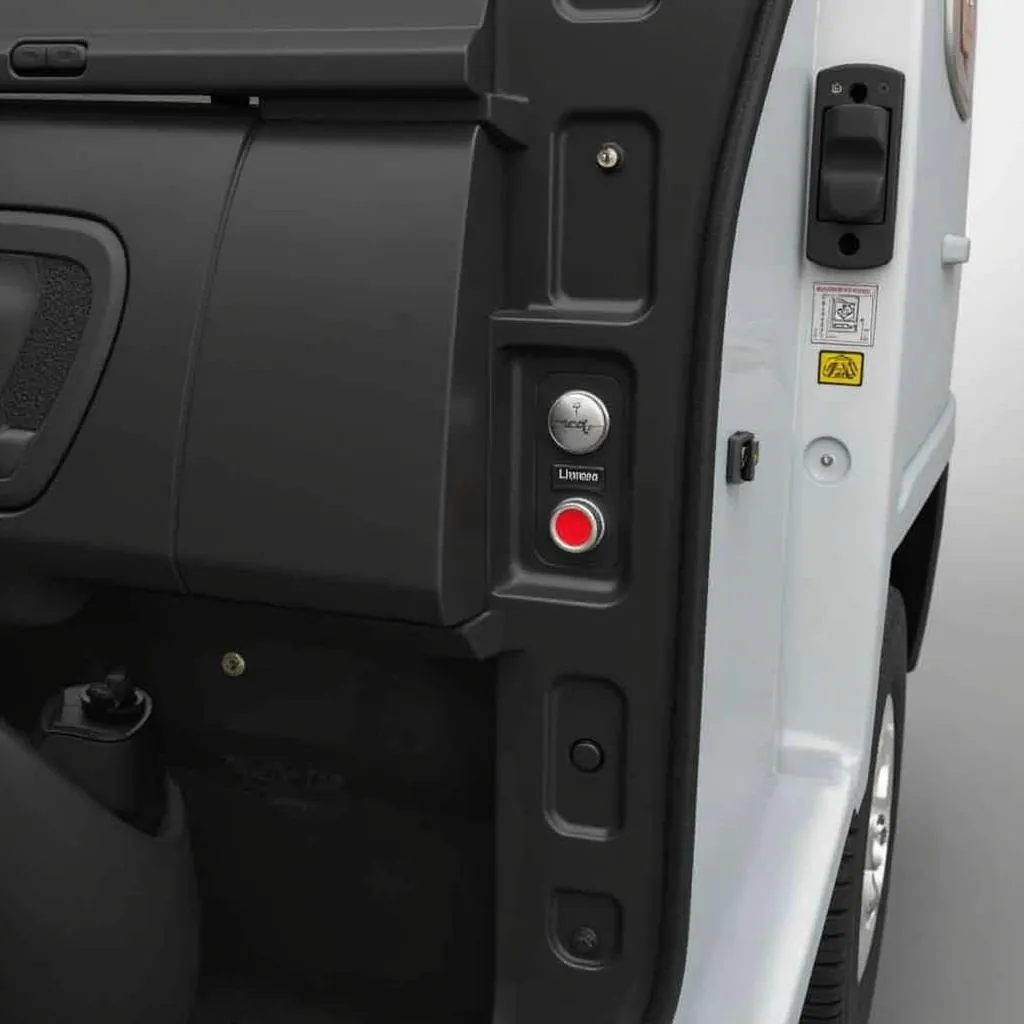The brake warning light on your Mini Cooper R56 is a crucial safety feature that shouldn’t be ignored. When illuminated, it signals a potential issue with your braking system that requires immediate attention. This can range from something as simple as low brake fluid to more complex problems like a faulty ABS module.
This comprehensive guide will walk you through the common causes of the R56 brake warning light, how to diagnose the problem, and the possible solutions.
Understanding Your Mini Cooper R56 Brake Warning Light
Your Mini Cooper R56 uses a single warning light for multiple brake-related issues. Depending on the specific problem, the light may illuminate differently:
- Solid Red Light: This usually indicates a critical issue, such as low brake fluid or a problem with the hydraulic system.
- Flashing Red Light: This often signals a malfunction with the Anti-lock Braking System (ABS) or Electronic Stability Control (ESC).
Common Causes of a Mini Cooper R56 Brake Warning Light
Several factors can trigger the brake warning light on your R56. Here are some of the most frequent culprits:
1. Low Brake Fluid
One of the most common and easily remedied causes is low brake fluid. Brake fluid is essential for transmitting force from your brake pedal to the wheels, and a leak or worn brake pads can cause the fluid level to drop.
2. Worn Brake Pads
Your Mini Cooper R56’s brake pads are designed with wear indicators that trigger the warning light when they reach a certain level of wear. Worn brake pads compromise your car’s braking performance and can lead to more serious damage if ignored.
3. Faulty Brake Sensors
Your R56 utilizes various sensors to monitor the braking system’s health. A faulty wheel speed sensor, brake pressure sensor, or ABS sensor can send incorrect signals, triggering the warning light.
4. Issues with the ABS System
The Anti-lock Braking System (ABS) prevents wheel lockup during hard braking. A malfunctioning ABS module, pump, or wiring can illuminate the warning light and potentially impact your car’s braking ability.
5. Problems with the Electronic Stability Control (ESC)
The ESC system works in conjunction with the ABS to maintain stability and prevent skidding. Issues with the ESC control unit, steering angle sensor, or yaw rate sensor can also trigger the brake warning light.
Diagnosing the Brake Warning Light on Your Mini Cooper R56
Pinpointing the exact cause of the brake warning light requires a systematic approach:
-
Check the Brake Fluid Level: Park your car on a level surface and inspect the brake fluid reservoir. If the fluid level is low, there might be a leak or your brake pads need replacing.
-
Inspect the Brake Pads: Visually examine your brake pads for signs of excessive wear. If they appear thin or you notice a grinding noise when braking, it’s time for new pads.
-
Read the Fault Codes: A diagnostic scan using a specialized tool can reveal valuable information about the specific fault codes stored in your Mini’s computer. This helps pinpoint the problematic component or system.
Solving Your Mini Cooper R56 Brake Warning Light Issue
Once you’ve identified the root cause, you can address the problem:
-
Adding Brake Fluid: If the fluid level is low, carefully top it off with the correct brake fluid type specified in your owner’s manual. However, simply adding fluid doesn’t fix the underlying issue of a potential leak, which needs professional attention.
-
Replacing Brake Pads: Worn brake pads require immediate replacement. It’s recommended to have a professional mechanic perform this task as it involves working with the braking system.
-
Addressing Sensor or System Malfunctions: Depending on the specific fault codes and your technical expertise, you may attempt to replace faulty sensors or repair minor wiring issues yourself. However, for complex problems like a malfunctioning ABS module, seeking professional help is advised.
When to Seek Professional Help for Your Mini Cooper R56 Brake Light
While some causes of the brake warning light are simple to fix, others require professional expertise. Here are situations where contacting a qualified mechanic is essential:
- Suspected Brake Fluid Leak: A leak in the braking system demands immediate attention and professional repair.
- Complex Electrical Issues: Diagnosing and fixing problems with the ABS module, sensors, or wiring requires specialized tools and knowledge.
- Lack of Technical Experience: If you’re unsure about any aspect of the diagnosis or repair process, it’s always best to err on the side of caution and seek help from a professional.
Preventing Future Brake Warning Light Issues on Your Mini Cooper R56
Proactive maintenance can go a long way in preventing future brake problems:
- Regular Brake Fluid Checks: Get into the habit of checking your brake fluid level regularly and topping it off as needed.
- Timely Brake Pad Replacements: Don’t wait for the warning light to illuminate before replacing worn brake pads. Follow your manufacturer’s recommended maintenance schedule.
- Addressing Minor Issues Promptly: If you notice any unusual noises or changes in braking performance, address them promptly to prevent more significant problems down the line.
Conclusion
The brake warning light on your Mini Cooper R56 is a critical safety indicator that should never be ignored. Understanding the potential causes, knowing how to diagnose the problem, and taking timely action are crucial for maintaining your car’s braking performance and ensuring your safety on the road. While some issues might be simple DIY fixes, don’t hesitate to seek professional help from a qualified mechanic for complex problems or if you’re unsure about any aspect of the repair.

